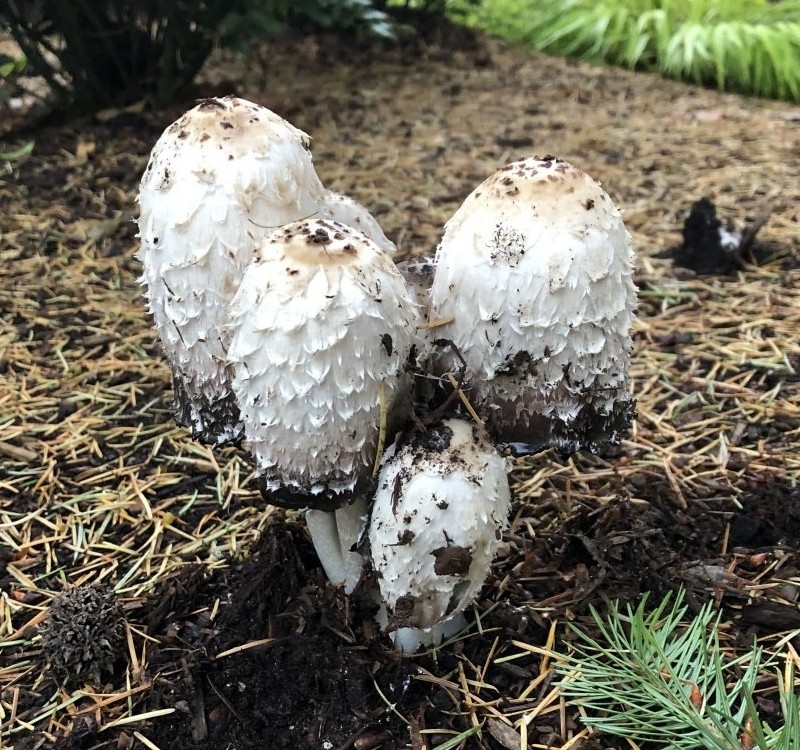White dung beetle (Coprinus comatus)
- Division: Basidiomycota (Basidiomycetes)
- Subdivision: Agaricomycotina (Agaricomycetes)
- Class: Agaricomycetes (Agaricomycetes)
- Subclass: Agaricomycetidae (Agaricomycetes)
- Order: Agaricales (Agaric or Lamellar)
- Family: Coprinaceae (Coprinaceae or Dung beetles)
- Genus: Coprinus (dung beetle or Coprinus)
- Type: Coprinus comatus (White dung beetle)
- ink mushroom

Coprinus comatus (lat. Coprinus comatus) is a mushroom of the genus Dung beetle (lat. Coprinus) of the Dung beetle family.
Hat:
Height 5-12 cm, shaggy, white, first spindle-shaped, then bell-shaped, practically does not straighten. There is usually a darker bump in the center of the cap, which, like the captain, is the last to disappear when the mushroom cap comes out on the ink. The smell and taste are pleasant.
Records:
Frequent, free, white, turn pink with age, then turn black and turn into “ink”, which is characteristic of almost all dung beetles.
Spore powder:
The black.
Leg:
Length up to 15 cm, thickness 1-2 cm, white, hollow, fibrous, relatively thin, with a white movable ring (not always clearly visible).
Spread:
White dung beetle is found from May to autumn, sometimes in enchanting quantities, in fields, vegetable gardens, gardens, lawns, in garbage dumps, dumps, dung heaps, and also along roads. Occasionally found in the forest.
Similar species:
White dung beetle (Coprinus comatus) is almost impossible to confuse with anything.
Edibility:
Great mushroom. However, it should be remembered that only mushrooms that have not yet begun to fulfill their Great Mission – to self-digestion, to turn into ink, can be collected. The plates must be white. True, nowhere is it said what will happen if you eat (eat, as they say in special publications) a dung beetle that has already started the process of autolysis. However, there are hardly any who want to. It is believed that white dung beetle is edible only at a young age, before the staining of the plates, no later than two days after it emerged from the soil. It is necessary to process it no later than 1-2 hours after collection, since the autolysis reaction continues even in frozen mushrooms. It is recommended to pre-boil as conditionally edible, although there are claims that the mushroom is edible even when raw. It is also not recommended to mix dung beetles with other mushrooms.
It should also be noted that, according to scientific data, slop saprophytes like dung beetles pull all kinds of harmful products of human activity from the soil with special enthusiasm. Therefore, in the city, as well as near highways, dung beetles cannot be collected.
By the way, it was previously believed that Coprinus comatus contains substances that are incompatible with alcohol, and therefore, in a sense, is poisonous (although, if it comes to that, alcohol itself is poisonous, not a mushroom). It is now quite obvious that this is not so, although sometimes this old misconception pops up in the literature. Many other dung beetles advocate a healthy lifestyle, such as Gray (Coprinus atramentarius) or Flickering (Coprinus micaceus), although this is not certain. But Dung beetle, fortunately or unfortunately, is deprived of such a property. That’s for sure.









